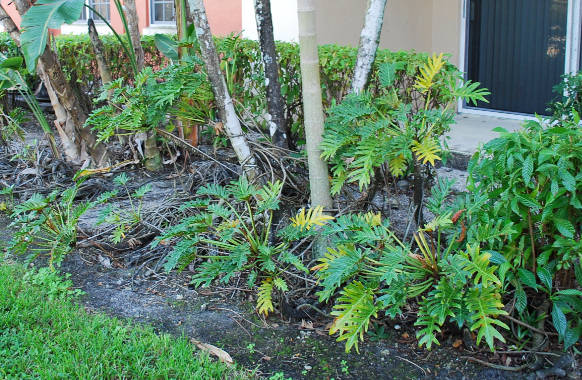
Dear Carol,
I would like to know if the Philodendron trunk can be cut/pruned or will it kill the plant? It has grown so large, and I really need to do something. Is there a way to move the central plant to another location? Any suggestions on how to prune Philodendron right will be much appreciated.
Linda
Via email
Growing naturally in the warm, moist tropical forest, trees, and cliffs of the American and West Indian tropics, plants of the genus Philodendron are popular as houseplants and landscape specimens.
The word philodendron means “tree-loving.” The plants mostly grow in association with trees in their native habitats. Philodendrons grow in two forms, self-heading types with stout, slow-growing stems and vining types with rambling stems. However, most philodendrons eventually ramble or climb. They may be completely epiphytic, growing solely on other plants using them for support, or they may grow roots into the soil and cling to trees or rocks for support.
Philodendron bipinnatifidum, known as cut-leaf philodendron or Selloum has substantial, impressive elephant-ear-like leaves. It is evergreen, a shrub or climbing liana from southern Brazil and Paraguay, and grows a tall semi-woody trunk-like stem that often sprawls or twists as the plant ages. This same “trunk” will also twine and cling to trees or just about any other support as the plant matures.
Selloum prefers fertile, moist, well-drained soil. Filtered light or full shade is best for lush, green leaves. Growth can be rampant and regular pruning is required to keep this vine in bounds. Use as a ground cover or on arbors or trellises for dependable, soft green color and a tropical look around patios, windows, and pools.
However, the pruning of Selloum can be trying. As the plant matures, it sprawls to find something to climb on. Unfortunately, once the stalk or trunk is cut, it will not sprout new stalks or branches as other plants do. The cut stalk simply sits there and usually begins to wither and die.
The best way to control the size of or prune cut-leaf philodendron beds or plants is to remove whole stalks. The large plants can be transplanted to other locations, but this is often unsuccessful. A best practice is to remove complete plants and replant the area with young, nursery-grown plants.
This column first appeared in the Treasure Coast Newspapers.
Leave a Reply